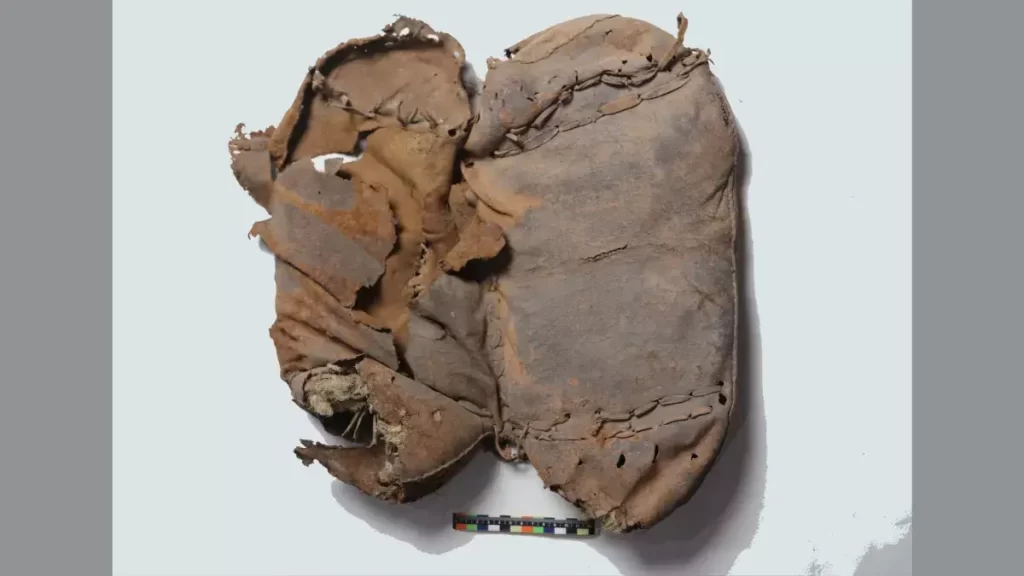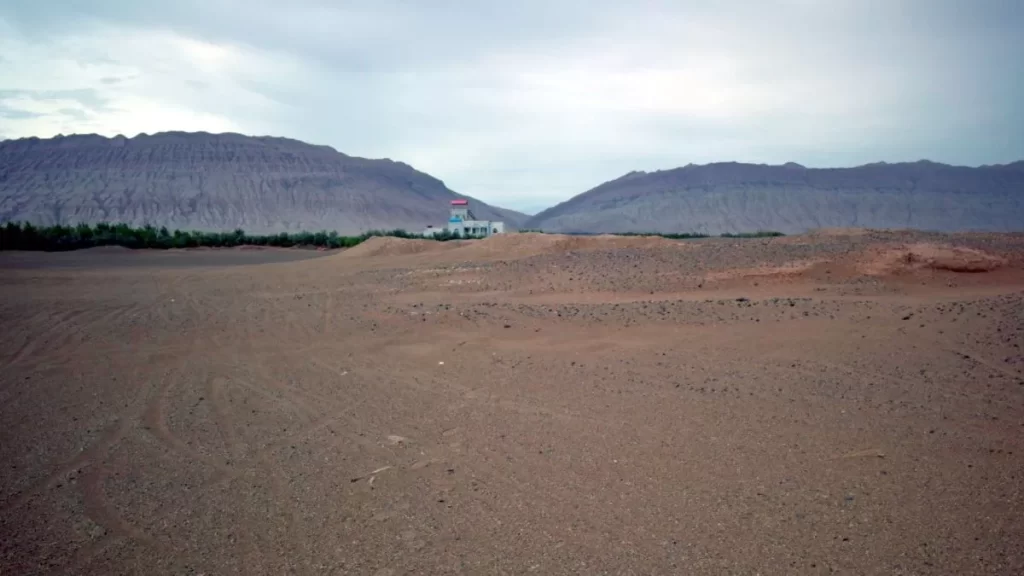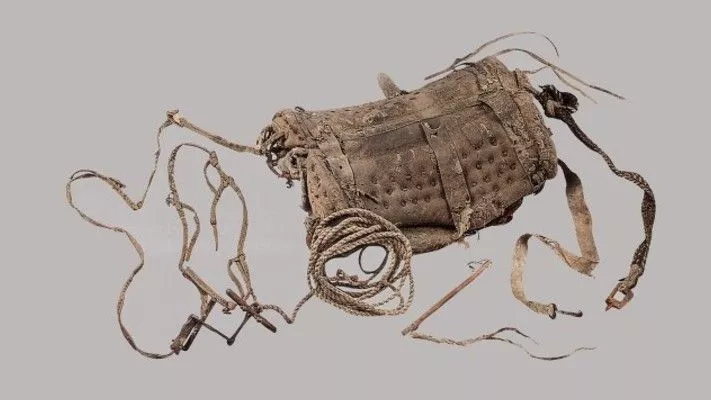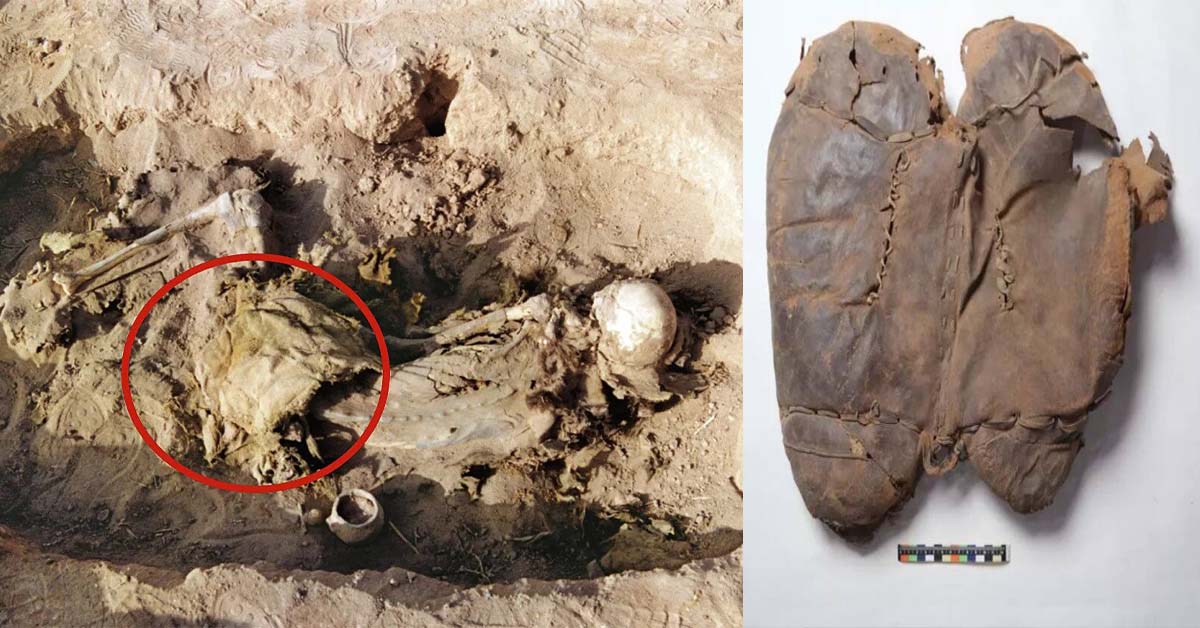2,700-Year-Old Saddle Discovered In Woman’s Grave In China May Be Oldest Ever Found
Archaeologists have unearthed an elaborate leather horse saddle — possibly the oldest ever found — from a grave in northwestern China, according to a new study.


The saddle, preserved for up to 2,700 years in the arid desert, was discovered in the tomb of a woman at a cemetery in Yanghai, in the Turpan Basin of China’s Xinjiang Uygur Autonomous Region.
The woman was dressed in a hide coat, woolen pants and short leather boots, and had a “leather saddle placed on her buttocks as if she was seated on it,” according to the study, published Tuesday (May 23) in the journal Archaeological Research in Asia.
The saddle — two cowhide cushions filled with a mixture of straw and deer and camel hair — was made between 724 and 396 B.C., according to radiocarbon dating.
It may predate saddles known from the Scythians — nomadic, warlike horse riders from the western and central Eurasian Steppe who interacted with the ancient Greeks and Romans.
The earliest Sythian saddles seem to date from between the fifth and the third centuries B.C. and have been found in the Altai Mountains region of Russian Siberia and in eastern Kazakhstan.
“This places the Yanghai saddle at the beginning of the history of saddle making,” study lead author Patrick Wertmann, an archaeologist at the University of Zurich, told Live Science.

The tombs at Yanghai are thought to be from people of the Subeixi culture, who occupied the Turpan Basin from about 3,000 years ago.
The culture is named after another graveyard of tombs near the modern town of Subeixi, about 30 miles (50 kilometers) northeast of Yanghai.
Horse herds

Archaeologists now think horses were domesticated as herd animals up to 6,000 years ago. But the earliest evidence suggests they were kept for their milk and meat; horse-riding may not have started until up to 1,000 years later.
The first riders used mats secured to the backs of horses with straps; carvings show Assyrian cavalrymen with such horse-gear in the seventh century B.C.
Archaeologists don’t know exactly when true saddles were invented, but they likely were developed by horse-riders in Central Asia about the mid-first millennium B.C., which would make the Yanghai saddle among the oldest, Wertmann said.
The development of saddles began “when riders began to care more about comfort and safety, and also the health of the horses,” he told Live Science in an email. “Saddles helped people to ride longer distances, hence leading to more interaction between different peoples.”
The early Scythian saddles and the Yanghai saddle both have distinct supports, which help riders maintain a firm position and raise themselves in the saddle, such as when shooting an arrow. The first saddles also had no stirrups, Wertmann said.
Female riders
The Subeixi had similar weaponry, horse gear and garments to the Scythians and may have had contact with them in the Altai Mountains region, the study authors wrote.

But while the Scythians were nomads, the Subeixi horse-riders were likely pastoralists who looked after herds of animals within the Turpan Basin.
University of Zurich biomolecular archaeologist Shevan Wilkin, who was not involved in the study, told Live Science that the extraordinary level of preservation of the Yanghai saddle suggests other, potentially older saddles, may be found nearby.
“Usually for something organic that’s this old, like leather, then we wouldn’t have any remnants of it, or very little,” she said.
The seated position of the buried woman on the saddle suggests she was a rider. “This really shifts our ideas about who was riding horses,” Wilkin said.
Birgit Bühler, an archaeologist at the University of Vienna, who also wasn’t involved with the study, told Live Science in an email that the discovery in an ordinary tomb is “strong evidence for women participating in the day-to-day activities of mounted pastoralists, which included herding and travelling.”
The find contradicts traditionalist historical narratives associating horse-riding with warfare by elite men, she said.




